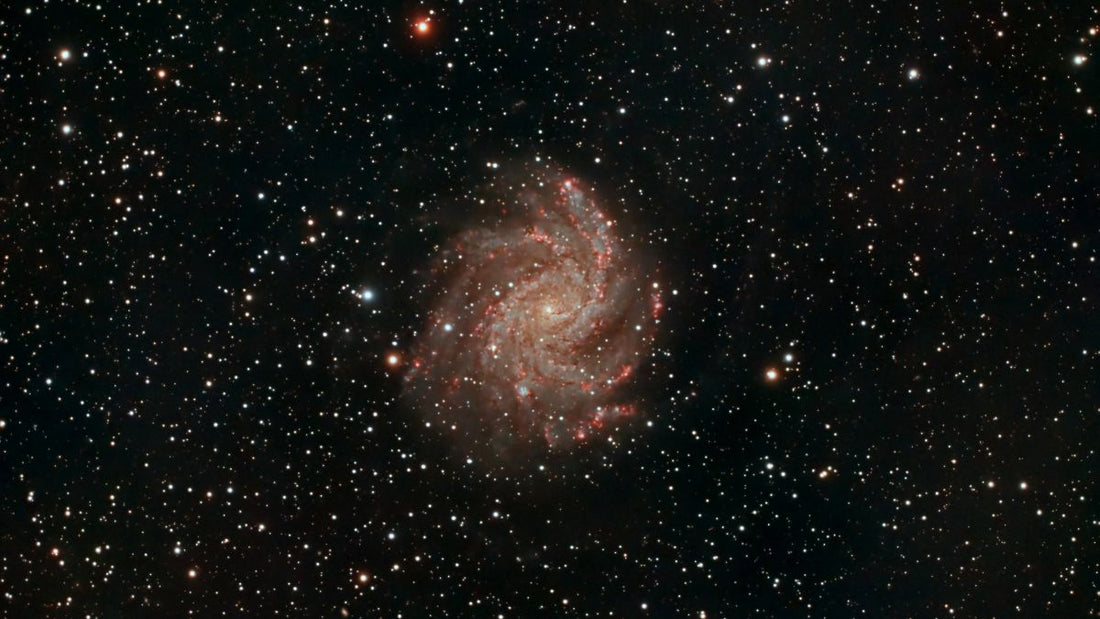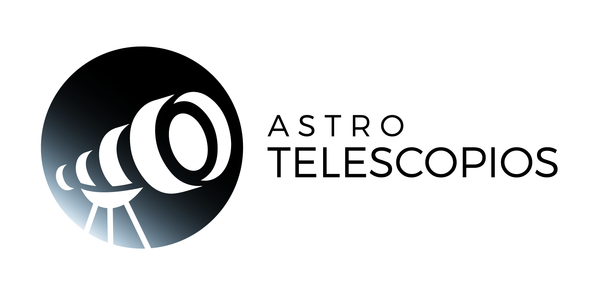
What telescope to buy for astrophotography?
If you have come this far it is because you have decided on astrophotography which, unlike visual astronomical observation, requires other types of equipment and techniques. In this article we want to focus on the telescope for deep sky astrophotography and planetary astrophotography . Pay attention to the recommendations we make for each case and click on the links to take you to the recommended telescope.
Deep sky astrophotography
Purchasing a telescope for deep sky astrophotography involves considering several factors, such as budget, experience, additional equipment needed, and telescope features. Here are some recommendations that might help you decide:
- Aperture: Larger aperture allows more light to be captured, essential for deep sky objects.
- Focal ratio (f/): Low focal ratio (f/4 - f/6) is preferable for astrophotography, as it allows you to capture brighter images in less time.
- Mount: A motorized equatorial mount with tracking is essential for long exposures without shaky stars.
- Telescope type:
- APO Refractors: Provide clear, sharp images with fewer chromatic aberrations. They're more expensive.
- Newtonian reflectors: Good value for money and large aperture for lower cost. They require collimation.
- Schmidt-Cassegrain (SCT): Compact and versatile, but more expensive and with a higher focal ratio.

Deep sky telescopes
Apochromatic refractor telescope
- Type: APO Refractor
- Minimum recommended opening: 80 mm
- Minimum recommended Focal Ratio: f/7.5
- Pros: Good optical quality, portable, relatively affordable.
- Cons: Limited opening.
Newtonian astrograph telescope
- Type: Newtonian Reflector
- Opening: 200mm
- Focal Ratio: f/3.9
- Pros: Large aperture, fast focal ratio.
- Cons: Needs frequent collimation, bulkier.
Schmidt-Cassegrain Telescope
- Type: Schmidt-Cassegrain
- Opening: 203mm (8 inches)
- Focal Ratio: f/10 (can be reduced with a focal reducer)
- Pros: High optical quality, versatile.
- Cons: Expensive, longer exposure time without focal reducer.
The choice of telescope will depend on your budget, space and level of experience. For beginners, an APO refractor like the Sky-Watcher Evostar 80ED combined with a mount like the Sky-Watcher EQ6-R Pro is a great option. For more advanced users, a fast Newtonian such as the ProNewton N 153/750 OTA Telescope or a Cassegrain such as the Pro CC 203/2436 OTA Cassegrain Telescope with the appropriate mount will provide great versatility and quality in deep sky images.
Essential equipment for deep sky astrophotography
The equipment that we consider essential for deep sky astrophotography is a mount, obviously, but we will talk about that later, and a camera. In addition, there are also filters that will help us achieve better images.
- Camera: Specialized CCD/CMOS or a DSLR.
- Guide: Guide telescope and self-guiding camera for long exposures.
- Filters: Narrowband filters ( H-alpha , OIII , SII) to improve the image of nebulae.
- Software: Image processing software (PixInsight, Photoshop).
Keep in mind that deep sky astrophotography requires a lot of time dedication since they are photographs that require adequate exposure time in addition to image processing. Some software is included with the purchase of CCD/CMOS cameras, while with DSLR you will have to use other programs.
Planetary astrophotography
For planetary astrophotography, the factors and considerations are somewhat different than those for deep sky astrophotography. Resolution and detail are paramount in capturing the planets, and this is where magnification power and optical quality play a crucial role. Here are some recommendations and considerations specific to planetary astrophotography:
- Aperture: A larger aperture allows for better resolution and more details on the planets.
- Focal ratio (f/): A high focal ratio (f/10 or higher) is preferable for planetary astrophotography, as it provides higher magnification.
- Telescope type:
- Reflectors: Newtonians and Dobsonians with higher focal ratios.
- Schmidt-Cassegrain (SCT): Compact, with high focal ratios, ideal for planetary.
- Maksutov-Cassegrain: Similar to SCT but with even greater focal ratios and excellent optical quality.

Telescopes for astrophotography of the planets
Schmidt-Cassegrain Telescope
- Type: Schmidt-Cassegrain
- Aperture: 203mm (8 inches)
- Focal Ratio: f/10
- Pros: High optical quality, easy to use, portable.
- Cons: Some are sold in an altazimuth mount and may not be ideal for long exposures.
Maksutov-Cassegrain Telescope
- Type: Maksutov-Cassegrain
- Opening: 180mm
- Focal Ratio: f/15
- Pros: Excellent image quality, high focal ratio.
- Cons: Narrower field of view, more expensive.
Starter Maksutov-Cassegrain Telescope
- Type: Maksutov-Cassegrain
- Aperture: 127mm
- Focal Ratio: f/10
- Pros: Excellent image quality, high focal ratio.
- Cons: It is mainly sold in altazimuthal mount and does not allow long exposures. But if your goal is planetary, you have enough. If you can buy one in an equatorial mount, the better because you will have more possibilities in deep sky as well, but if you are looking for something practical, the azimuthal mount is your option.
For planetary astrophotography, a telescope like the Celestron NexStar 8SE or the Sky-Watcher SkyMax 180 Pro is an excellent choice due to its high optical quality and adequate focal ratio. Combining these telescopes with a stable mount and a specialized planetary camera will allow you to capture detailed images of the planets. If what you are looking for is something cheaper, you have the little brothers that are the Celestron NexStar 5SE and the Sky-Watcher 127 EQ3-2 GoTo .
Essential equipment for astrophotography of planets
The advantage of starting out in planetary astrophotography is that you do not need such a "powerful" camera, although those used for deep sky also work, the capture method is different, as are some programs.
- Planetary Camera: High-speed, high-resolution cameras, such as the ZWO ASI224MC or veLOX 224 C
- Barlow: 2x or 3x Barlow lens to increase focal ratio and magnification.
- Filters: Color and infrared filters to highlight details in the planets.
- Software: Capture and processing software such as SharpCap, RegiStax and AutoStakkert.
Smart telescopes
Smart telescopes represent a revolution in astronomy by leveraging automation and artificial intelligence to improve the precision and efficiency of observations, opening up new possibilities in the exploration of the cosmos.
These telescopes have smaller apertures between 24 and 80 millimeters, their shorter focal length is recommended for deep sky astrophotography, the Moon and the Sun with the appropriate filter.
They are recommended for people who want an immediate result or who already have a large telescope for visual observation and want astrophotography of what they see in a simpler and more practical way.
Visit oursmart telescopes section by clicking here and for more information contact us.
We hope that this article has been useful, and if you have any questions you can send us a WhatsApp or email through atencionalcliente@astrotelescopios.es

